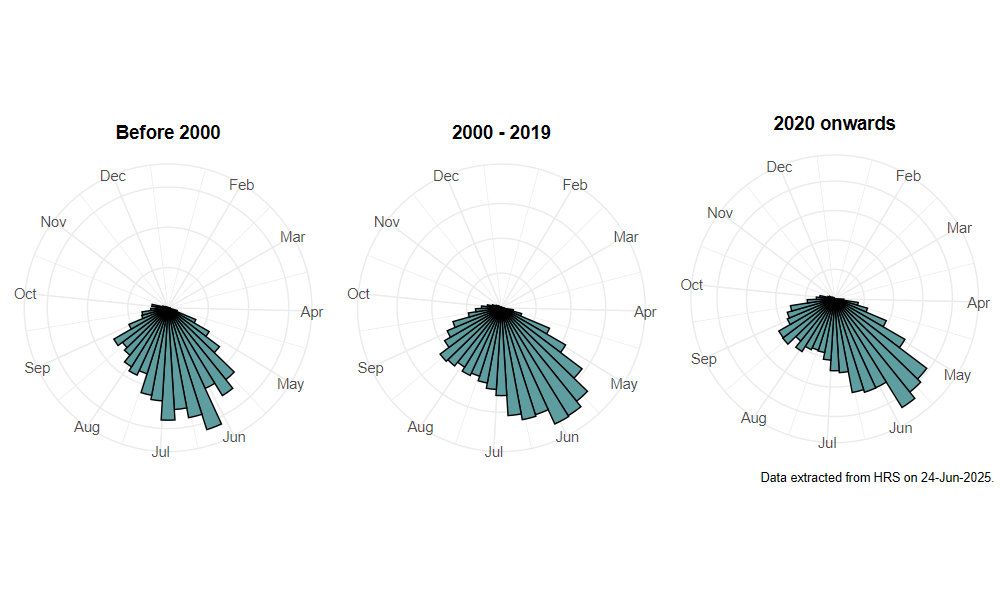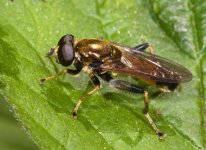Xylota segnis (Linnaeus, 1758)
Identification
Identification difficulty = 1. ![]()
![]() according to Ball & Morris, 20241
according to Ball & Morris, 20241
Biology
The larva has been found in decaying sap under the bark of trees, and in sap runs created by the bark weevil Hylobius abietis, but also in habitats not associated with trees, such as silage and decomposing potatoes. It occurs in all sorts of woodland and scrub, but also along hedgerows and in parks and gardens. Adults are typically seen running rapidly backwards and forwards over sun-lit foliage. They rarely visit flowers in southern England but regularly attend the flowers of Meadowsweet Filipendula ulmaria in Scotland (Morris, 2005)2.
Flight period
The following plots show the number of unique records per week excluding those reported to be of immature stages.

Distribution
Widespread and common in woodland and scrub of all kinds throughout Britain.

Trends
The following plots show the Frescalo TFactor vs year and a map of the rescaled frequency (all records) for the species.
